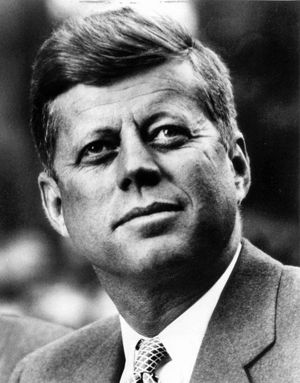The Cold War (1945-1991) dominated international relations within a framework of political, economic, and military tension between the United States and the Soviet Union. The Cold War facilitated global leadership by the United States, and provided Soviet dictator Joseph Stalin and his successors with an enemy to justify their repressive regime. The Cold War helped legitimize an unrepresentative government and maintain the Communist Party in the Soviet Union (Kennedy, 1989; Kissinger,1994).
In addition to its impact on the superpowers, the Cold War caused and perpetuated the division of Europe, and, within Europe, Germany. It also facilitated the reconstruction of Germany, Italy, and Japan into the international system following their defeat in World War II. The Third World especially felt the effects of the Cold War, which overlapped with the era of decolonization and national liberation in the Third World.
Emergence of the Cold War
The conception of superpower took place as a consequence of the imperial showdown that came to be known as the First World War. It was marked by the clash between Wilsonism and Leninism in the aftermath of two consequences of the global conflict, the entry of the USA into what had been a largely European affair, and the Russian Revolution, both Nicholas II’s autocracy and Kerensky’s democratic republic falling before the seizure of power by the Bolsheviks (Kennedy, 1989). From this beginning, Woodrow Wilson spoke out on behalf of the world’s greatest power, with maximum publicity. As a consequence of the First World War, the USA became stronger. The Soviet Russian Republic was weakened by the reverses inflicted by Germany and its allies, then by a civil war compounded by foreign intervention (Crockatt, 1995).
World War II was the culmination of a series of events that changed the global distribution of power. Within the previous thirty-five years the world experienced two global wars, two revolutions-the Russian and the Chinese-the collapse of five empires-the Ottoman, the Austro-Hungarian, German, Italian, and Japanese-and the decline of two major imperial systems, the British and the French. The result was the end of the European era and the rise to dominance of two superpowers, the United States and the Soviet Union (Gates, 1996).
The expansion of Soviet power and influence into central and Eastern Europe
alarmed US and Western leaders. The United States and its European allies feared that Soviet domination of Eastern Europe could limit access to needed markets, foodstuffs, and raw materials, as well as pose a security threat to Western Europe (Leffler, 1994) .
US leaders began to view the Soviet Union as a foe and to form a foreign policy
that focused on containing the spread of Soviet power and communist influence. The Truman Doctrine of March 1947 called for the global containment of communism (Gates, 1996). New government institutions reinforced the shift to a more activist foreign policy. The National Security Act of 1947 established the National Security Council to advise the president on foreign affairs and defense policy; created the Central Intelligence Agency to gather and analyze foreign intelligence and conduct covert operations; and created a Department of Defense to coordinate the activities of the branches of the US armed forces (Crockatt, 1995).
At the end of World War II, the USA became a more complete world power than at the end of the first, while the USSR was devastated a second time. The appearance of weapons capable of massive destruction started an arms race as the Soviet Union, Great Britain, and subsequently other nations sought to develop their own atomic weapons. The United States sought to maintain its lead in atomic capability (Kissinger,1994). World War II also generated an anti-imperialism, and movements toward independence and national liberation in the Third World created tension in the postwar international system. Independence movements increased, especially throughout postwar Asia where the wartime spread of the Japanese empire had replaced Western colonial regimes (Leffler, 1994).
The Cold War also reinforced the traditional US determination to maintain an economic and strategic sphere of influence in Latin America. In a pattern common throughout the region, conservative groups and their military allies replaced reformist governments, banned communist parties, and repressed labor unions and peasant organizations (Walker, 1993).
The Korean War (1950-53) transformed the nature of the Cold War and world politics. Its initial impact was to solidify the division of the world into political, military, and economic spheres. Europe remained divided, and the arms race and competition in the Third World emerged as active aspects of the Cold War. Although the Soviets matched the United States in the development of nuclear weapons and made impressive advances in missile technology, the United States maintained its lead in the arms race (Walker, 1993).
The struggle of the Third World for political independence, economic justice, racial equality, and cultural respect became an increasingly important source of international tension and conflict during the 1950s. Fighting against Western control, Third World countries and movements challenged Western hegemony and provided an opportunity for the expansion of Soviet influence. Soviet-American competition in the Third World intersected with the arms race in 1962 to bring about the Cuban Missile Crisis. Despite impressive economic and political gains by the Soviet Union, the United States remained the stronger of the two superpowers (Crockatt, 1995).
Changes in the balance of political forces both within and among nations took place throughout the Cold War and played a major role in initiating, prolonging, and finally ending the conflict (Gates, 1996). Anti-communism provided a framework for understanding a complicated world. US leaders regarded communism as a strategic threat because of its connections with Soviet power, and as an ideological and economic threat because of its hostility to private property and free markets. Anti-communist liberalism emerged that focused on communism’s denial of political and civil rights. Anti-communism became a guiding principle of US foreign policy and a significant force in US domestic politics (Leffler, 1994). It provided an explanation for what was wrong in the world.
Decline of the Cold War
The collapse of communism as an ideology paralleled the decline in the Soviet strategic position. Highly regarded by many at the end of World War II, the appeal of communism and the Soviet model of development declined sharply in most of the world over the course of the Cold War. Repression in the Soviet Union, Eastern Europe, and the People’s Republic of China (PRC) ruined communism’s image. In the 1960s and 1970s some European communist parties attempted to reform themselves and to divorce communism from the reality of Soviet practice. These efforts failed to gain sufficient support to take leadership of world communism from the Soviet Union. The falling Soviet economy further discredited communism’s appeal, as did growing international awareness of human rights and environmental abuses inside the Soviet Union, and Eastern Europe (Whitfield, 1991).
Economic changes restructured power relationships among nations. The inability of the Soviet Union’s economy to compete with the West restricted its citizens’ standard of living, threatened its national security, and ultimately eroded the legitimacy of the communist system. Although the roots of Soviet economic problems go back at least to the emergence of the Stalinist system in the late 1920s, military competition with the United States forced the Soviets to devote a larger share of their smaller gross national product to defense. The diversion of investment away from productive sectors and consumer goods ultimately undermined the Soviet Union’s willingness and ability to compete with the United States and to maintain its empire. Economic growth in the Soviet Bloc, which had risen in the late 1940s and the 1950s, began to slow in the early 1970s and never recovered (Kennedy, 1989; Kissinger,1994).
The Soviets proved unable to turn conditions in the Third World to their advantage. The era of decolonization (1945-75) represented a window of opportunity for the Soviet Union and a window of vulnerability for the United States and its allies. Although communist parties eventually came to power in some Third World countries, these gains were marginal as most national liberation movements proved to be beyond the control of any outside power.
The Berlin Wall came down during 1989 and 1990, and free elections resulted in the ouster of Communist regimes. In late 1991 the Soviet Union was divided into republics. The Iron Curtain was abolished and marked the end of the Cold (Kennedy, 1989; Kissinger,1994;LaFeber, 1999).
REFERENCES
Crockatt, Richard. Fifty Years War, The: the United States and the Soviet Union in world politics, 1941-1991. New York: Routledge, 1995.
Gates, Robert Michael. From the Shadows: the ultimate insider’s story of five presidents and how they won the Cold War. New York: Simon & Schuster, 1996.
Kennedy, Paul. The Rise and Fall of the Great Powers, Vintage Books, 1989.
Kissinger, Henry. Diplomacy. Simon & Schuster, 1994.
LaFeber, Walter. America, Russia and the Cold War, 1945-1990, 6th ed. New York: McGraw-Hill, 1991.
Leffler, Melvyn P. Specter of Communism, The: The United States and the Origins of the Cold War, 1917-1953. NY: Hill and Wang, 1994.
Walker, Martin. The Cold War: A History. New York: Henry Holt and Company, 1993.
Whitfield, Stephen J. Culture of the Cold War, The. Baltimore: Johns Hopkins University Press, 1991
Reference:
- The Cold War Museum www.coldwar.org/Cold War: Postwar Estrangement www.ibiblio.org/expo/soviet.exhibit/coldwar.html ;



